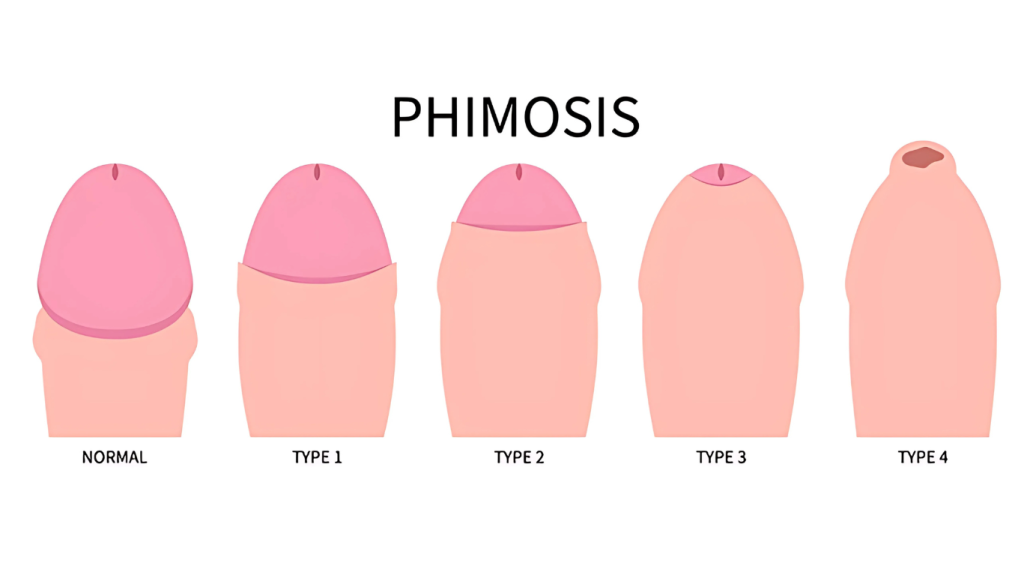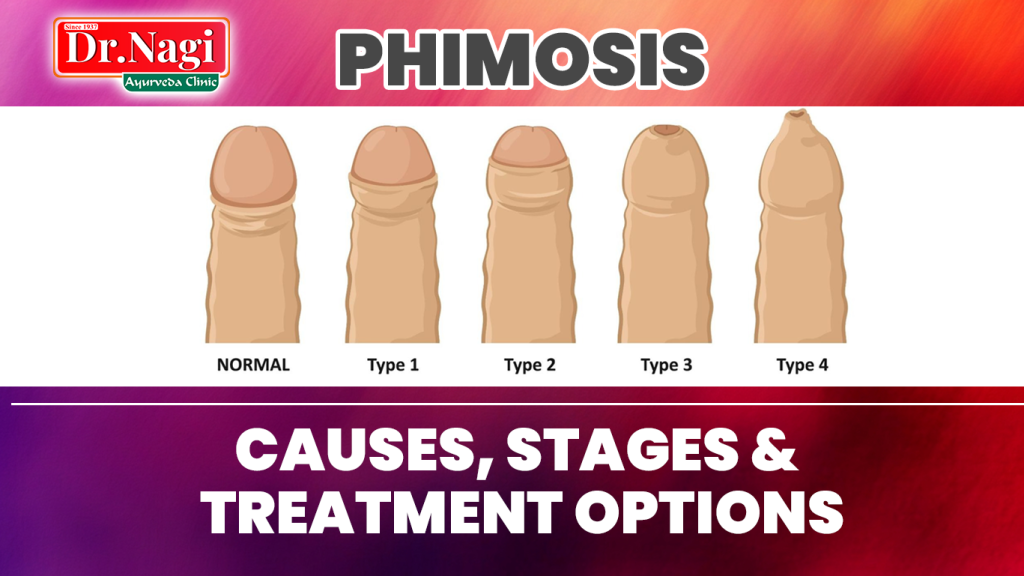What is Phimosis?
Phimosis is a condition in which the foreskin is tightly closed not pulling back without difficulty. The two types are given below:
Physiological (normal): It is a disorder that has existed since the beginning, and typically it goes away on its own. Once the child becomes an adult the stretch of the foreskin restores its original flexibility and the problem leaves.
Pathological (acquired): It is a condition that can be caused by infection, abuse, or inflammation and may require treatment with drugs.
The major cause of phimosis is the constant irritation or an accident due to the forcible pulling back of the foreskin which has led to the development of tough fibrous tissue.
Phimosis Stages: From Mild to Severe
Phimosis progresses through different stages:
- Stage 1: The Foreskin can be partially retracted, causing mild discomfort.
- Stage 2: Foreskin covers most of the glans, and retraction is painful.
- Stage 3: Complete inability to retract; swelling or ballooning when urinating may occur.
- Stage 4: Severe tightness, possible pain with erections and recurrent infections.
Awareness of these stages helps in deciding the best course of action.

Symptoms and Effects:
Some of the signs that people with phimosis usually experience are painful foreskin retraction, difficulty in urination, local swelling, UTI, and pain during intercourse. Inflammation or infection that continues for a long time and is caused by phimosis can lead to fertility problems, however, the major portion of the disease doesn’t result in infertility directly.
How to Treat Phimosis at Home:
Simple Exercises & Hygiene
Phimosis exercises and proper hygiene can be beneficial in the early or minor phases:
- After a warm bath, gently extend the foreskin daily, but do not force it at any time.
- Use the steroid cream suggested by your doctor to make the skin softer and easier, then carry on with the stretching.
- Ensure that the place is clean and dry; use lukewarm water for the wash.
- Do not use harsh soaps or chemicals.
- If infections have occurred, doctors might give antibiotics or antifungal medicines.
The home treatment is generally safe, but it is always advisable to seek Dr. Nagi advice before starting the exercises.
Phimosis Treatment through Ayurveda
The treatment program of Ayurveda aims at lessening swelling and supporting the extensibility of the skin. Herbal oils, anti-inflammatory pastes, and changes in diet may alleviate minor symptoms. Safe ayurvedic treatment customised for each patient's requirement can be prescribed by Dr. Nagi.
When to See a Phimosis Doctor or Specialist
It’s time to seek help if:
- Pain increases or urination is obstructed
- The foreskin cannot be retracted even after home treatment
- There is frequent swelling, infection, or scarring
Dr. Nagi is a phimosis specialist who offers thorough diagnosis and recommends the most effective and individualised treatment.
Surgical Options: Is Phimosis Surgery Painful?
In case steroid creams and exercises do not bring the expected results, a surgical treatment will be the next option:
Circumcision: The complete elimination of the foreskin; done under sedation, it is a permanent solution.
Preputioplasty: The release of the foreskin by making small incisions and most of the tissue is left untouched.
Mild pain after surgery is considered normal and it can be easily controlled by medication. The majority of patients recover in a few weeks.
Take Action: Expert Help is Just a Click Away
Phimosis is not necessarily a condition that has to interfere with your life or self-esteem. Usually, prompt treatment can stop the progression of the symptoms, and later therapies can even provide an alleviation in difficult situations.
Do you want to deal with phimosis and have your well-being restored? Make your confidential visit to Dr. Nagi, the expert in phimosis, closest to you. Get in touch with Dr. Nagi for the right guidance and treatment!



One Response